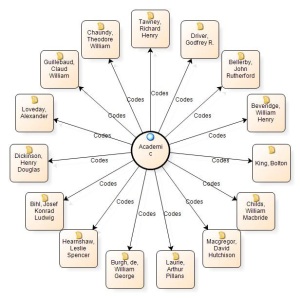As challenges go, setting myself the task of reading every John Rebus novel by Ian Rankin was hardly the worst one out there. Some people set themselves challenges that require some kind of sacrifice or tough physical effort. This involved sitting down and reading a series of books, sometimes on the sofa with a cup of tea to hand, but more often than not, whilst waiting for the Tiny Terror to lie down in his cot and go to sleep.
So what did I learn? I already knew that Ian Rankin was one of my favourite authors, and John Rebus remains one of my favourite protagonists. However, as I’d tended to dip into the series in and out since the late 1990s, depending on what books were available when I happened to be in a bookshop or library or hanging around at my parents’ house, I’d not read the novels in sequence or at regular intervals. I suspect that this is a fairly common way of reading series if you come to them once the series is in full swing and you are reliant on the vagaries of library and bookshop ordering. Therefore, whilst I knew the characters, I’d not fully appreciated the development of character and plot over time.
Rebus is one of my favourite characters because he isn’t handsome, cool or thin; he is overweight, scruffy for most of the time, and drives an ancient Saab. With the series running in ‘real time’, these qualities become more entrenched over the years. Whilst there are intertextual nods to Life on Mars in Saints of the Shadow Bible, Rebus’ status as an older police officer who will not or cannot retire means that as he ages, he stands out more as the Gene Hunt of Edinburgh. But if Gene Hunt is rooted in the 1970s and 1980s, Rebus is a time traveller.
Rebus grapples with the new technologies that emerge over time: pecking out text messages with his fingers sticks in my mind from the later novels. One of the things I have enjoyed the most about the work I have done on juvenile crime is the ways in which technological change impacts on the things that we value and the way that we behave. I was fascinated by the attraction getting things for free from outdoor vending machines held for interwar teens, or their interest in jumping into the back of grocery delivery vans for goodies. There’s much to unpick here about the history of consumption, transport etc and how it impacts not only on our ‘social’ behaviours (the convenience of shopping and the ability to afford chocolate, toys etc) but also on our ‘antisocial’ behaviours, in terms of acquiring these things if we don’t have the money to do so (or don’t want to spend it). Rebus is more concerned with violent crimes, but the acquisitive society shapes much of this. As the novels progress, and Scottish devolution and independence become ever more pressing ‘real life’ themes, so Rankin explores the ways in which this impacts on the opportunities for both the under- and overworlds to make a profit from the changing political world of Scotland. And then there are the ways in which those who don’t have the resources fare in this world. Rebus also notes the ways in which the internet and social media have changed some aspects of our behaviour – the younger generation of police and criminals go about their business through computers, tablets and phones. Yet there remains a place for the shoe leather and contacts form of policing that Rebus is more at home with – though even he knows how to use Google…
Given that there’s still some time before Even Dogs in the Wild comes out, I may well start again with Knots and Crosses and 1990s Rebus. These are novels that stand multiple reads largely because they are not just about crime. They are about Edinburgh; they are about the state of modern Scotland, but also its place in the United Kingdom. They are novels about how linked in we are with the world around us, virtually as much as in the ways in which people move or are moved through the criminal underground, either for nefarious ends or because they are desperate and it is the criminals who offer them the glimmer of hope for a better life. Anyway: that’s enough fangirling from me. If you’ve not read any Rebus, why not start soon?


